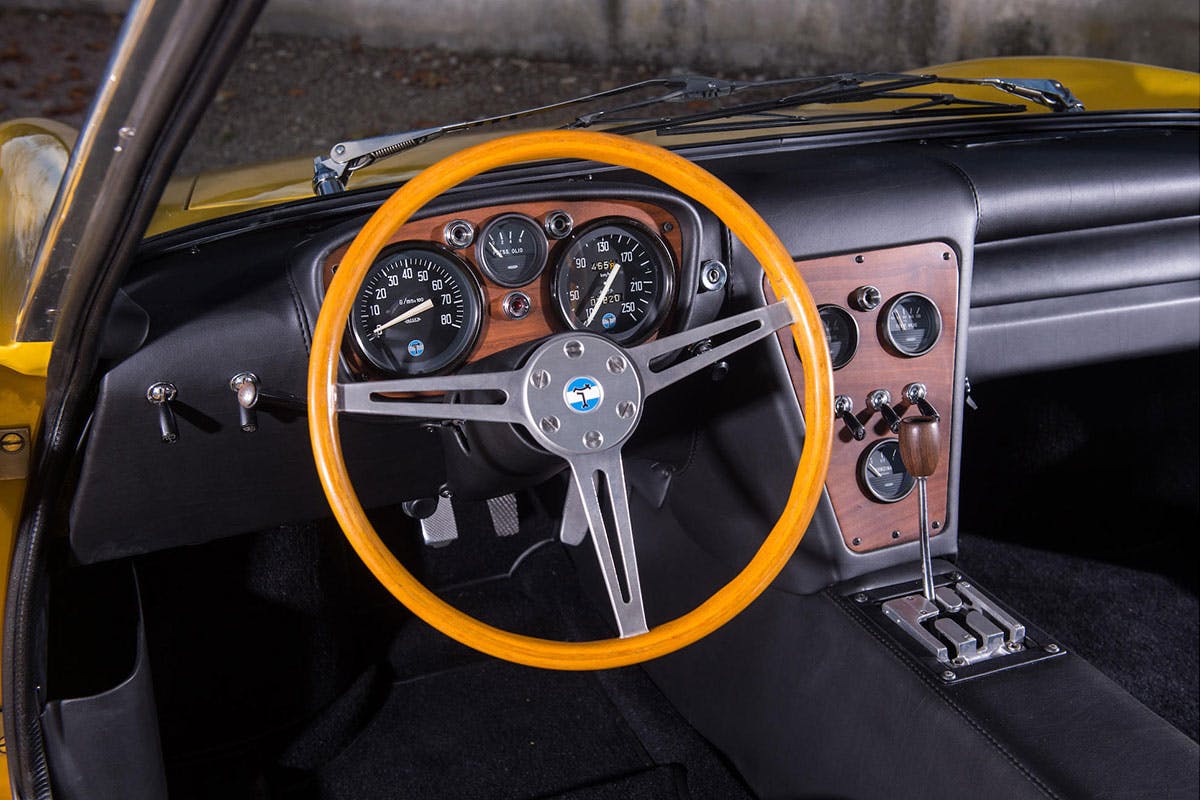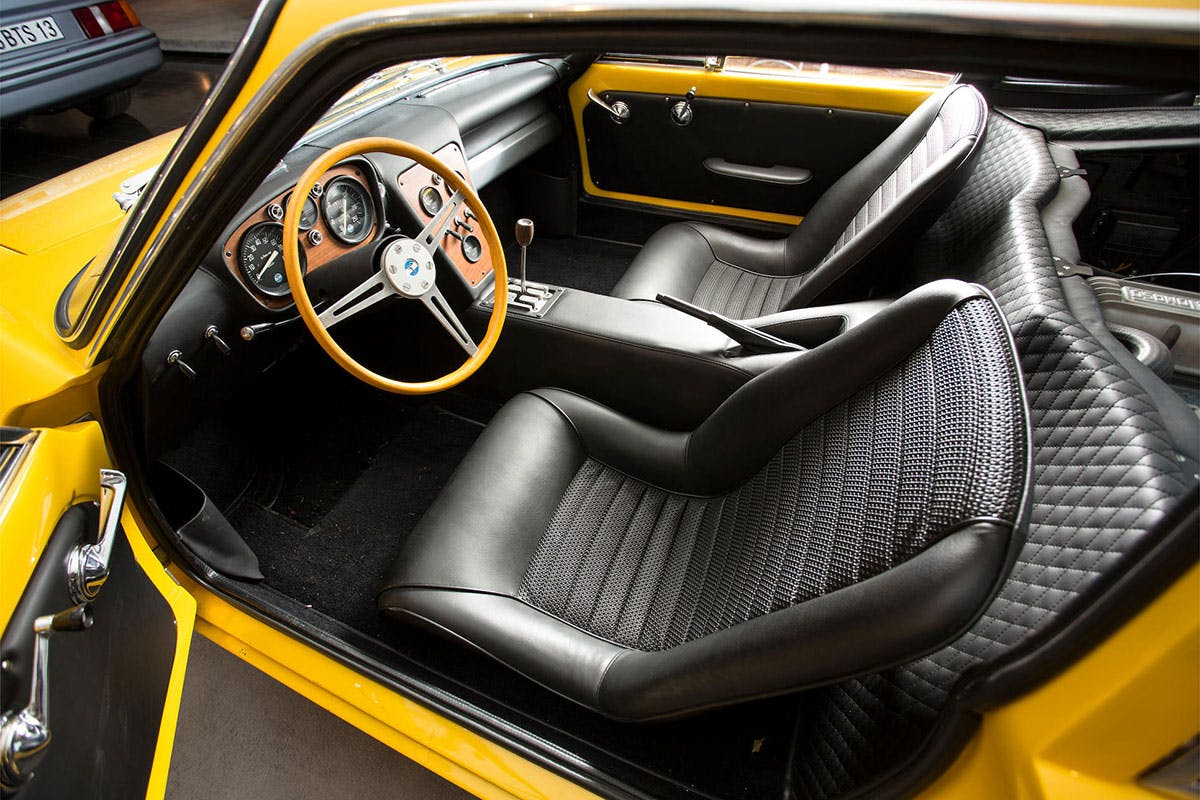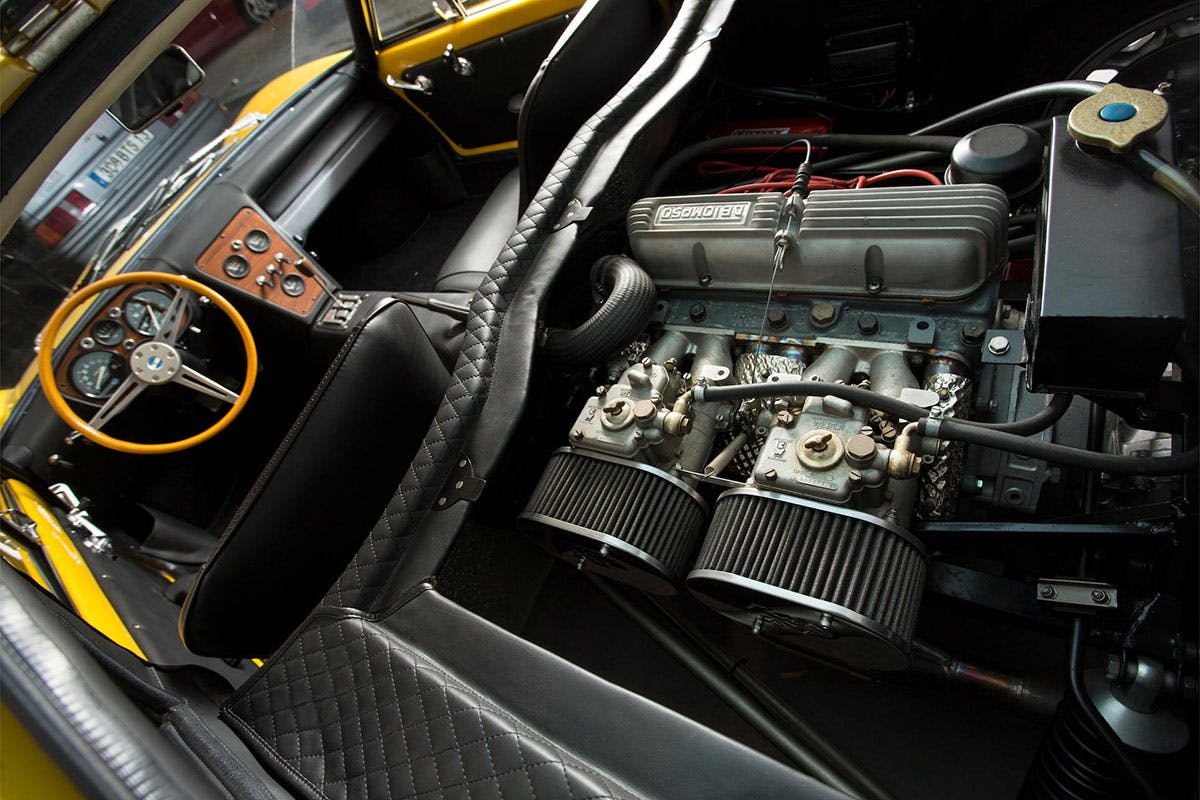DeTomaso’s rare, forgotten Vallelunga was the Pantera’s rough draft
Think DeTomaso and you probably think V-8, with a fabulous exhaust note and huge reserves of performance. But that’s not how things began for this enigmatic Italian brand, because its first car featured nothing more glorious than a Ford Cortina‘s four-cylinder. Sure, the Kent lump was mounted in the middle and the Vallelunga looked exotic, but this was still a car with a mere 104 hp on tap. However, the Valleunga was compact (149 inches long and 43 tall) and weighed just 1543 pounds. Plus it was fabulously slippery, so it was still capable of a claimed (but perhaps optimistic) 130 mph.
Born in Argentina in 1928, Alejandro DeTomaso started out racing Maseratis and OSCAs in the 1950s, before moving into building single-seater racing cars in 1959; he would go on to try his hand at making F1, F3 and even Indianapolis racers. Then, in 1962, he decided that it was time to move into road-car production, and his first effort was a car that could have laid claim to being the first mid-engined production sports car, if it hadn’t been for the arrival of the Bonnet Djet in autumn 1962.
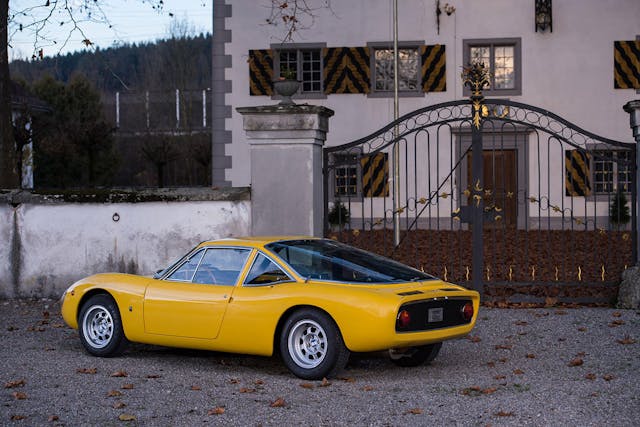
Named after the Rome-based circuit at which DeTomaso did much of his testing, the Vallelunga arrived in ’63 and, in some respects, was advanced in its design. The four-cylinder engine and four-speed gearbox (soon upgraded to a five-speeder) acted as load bearers for the whole of the back end of the car. Bolted to the engine was an upturned U-section chassis, which opened out at the front of the car to carry the suspension.
Borrowed from the Cortina 1500GT, the 1498-cc four-cylinder engine sported a pair of Weber 40 DCOE carburetors, and for those who wanted some extra pep there was a 133-hp option. That power was sent to the back wheels via a modified Volkswagen gearbox fitted with Hewland gears. Across the top of the transmission sat a crossmember which carried the top mounts for the rear suspension; this wasn’t a car over-endowed with refinement.
There were disc brakes and independent suspension fitted front and rear, along with rack-and-pinion steering. The suspension was by unequal-length wishbones and coil springs with telescopic dampers, with an antiroll bar at each end. Everything was rose-jointed and, to top things off, DeTomaso even commissioned Campagnolo to cast some magnesium alloy wheels specially for the Vallelunga.
Making its debut in open-topped form at the 1963 Turin Salon, the Vallelunga roadster would remain a one-off. The next year a coupé made its debut, and it was this body style that would account for all of the cars made apart from that initial prototype. While the roadster and first three (some claim five) coupés were bodied in aluminum, most Vallelungas featured a one-piece fiberglass body shell which was made by Ghia. Engine access was via a lift-up Perspex rear window and a removable plywood decklid.
In this definitive production form, the Vallelunga’s dry weight distribution was 47/53 front/rear, but once the aluminum fuel tank in the nose was filled and two occupants sat in the cabin, the weight distribution was a perfect 50/50. This, allied to its advanced mechanical specification, ensured that the tiny DeTomaso was a blast to drive, if unrelentingly noisy.
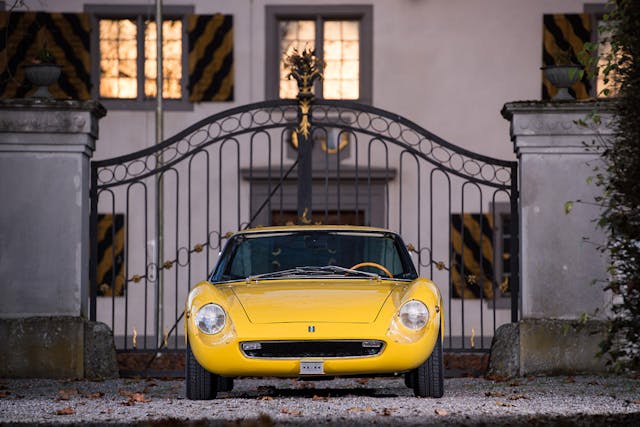
It was almost inevitable that the DeTomaso Vallelunga would be built in small numbers, since it was a costly and compromised machine from an unknown brand. By the time the final Vallelunga was made in 1965, just 50 had been made by Ghia along with three aluminum-bodied protoypes and five alloy-bodied competition cars.
Just one of the Vallelungas made was right-hand drive and it was produced for Colonel Ronnie Hoare, Ferrari importer for the U.K. His plan was to fit a 148-hp Lotus twin-cam engine to create a true pocket-sized road rocket, but he found the Vallelunga simply too under-developed to be viable. He then sold the car on in 1970, by which point DeTomaso was on the verge of unveiling his best-known car, the Pantera.
Rare and obscure, Vallelungas are the most valuable vehicles in the DeTomaso legacy. Though a museum-grade (#1 condition) Mangusta specced with the higher-output engine and built between 1967 and 1970 tops out at $325,000, a Vallelunga in such better-than-factory condition is worth $390,000. For a driver-quality example with a few scuffs and bruises, you’re looking at $245,000—more than $80K more than the most valuable Pantera (a 1988 GT model in #1 condition). The first of the DeTomaso road cars hardly ever pop up for sale, either.
While imperfect at its debut, the Vallelunga established the formula of mid-engine Ford power under striking Ghia body work that the later Mangusta and Pantera would render in greater size and production count. Four years after the roadster debuted at Turin, DeTomaso would attract the eye of Lee Iacocca, then Ford’s executive vice president, and leverage its Lincoln-Mercury dealer network for less delicate, more accessible offerings. As a statement of DeTomaso’s wild, original vision, however, the Vallelunga will always stand apart.

